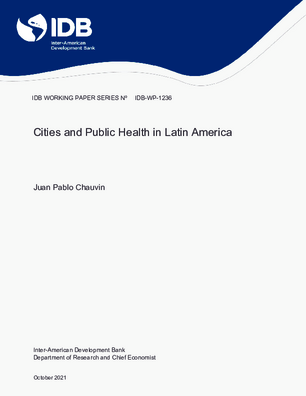Cities and Public Health in Latin America
Date
Oct 2021
Summary
This paper presents an overview of how health outcomes vary across cities in Latin America and discusses some of the known drivers of this variation. There are large disparities in outcomes across cities and across neighborhoods of the same city. Because health is closely related to the socioeconomic conditions of individuals, part of the spatial variation reflects residential segregation by income. Local characteristics also have a direct effect on health outcomes, shaping individuals' access to health services and the prevalence of unhealthy lifestyles. In addition, urban environments affect health through natural atmospheric conditions, through local infrastructure in particular water, sanitation, and urban transit and through the presence of urban externalities such as traffic congestion, pollution, crime, and the spread of transmissible diseases. The COVID-19 pandemic illustrates many of these patterns, since the impact of the disease has differed sharply across cities, and much of this variation can be explained by observable local characteristics particularly population, connectivity with other cities and countries, income levels, and residential overcrowding.




